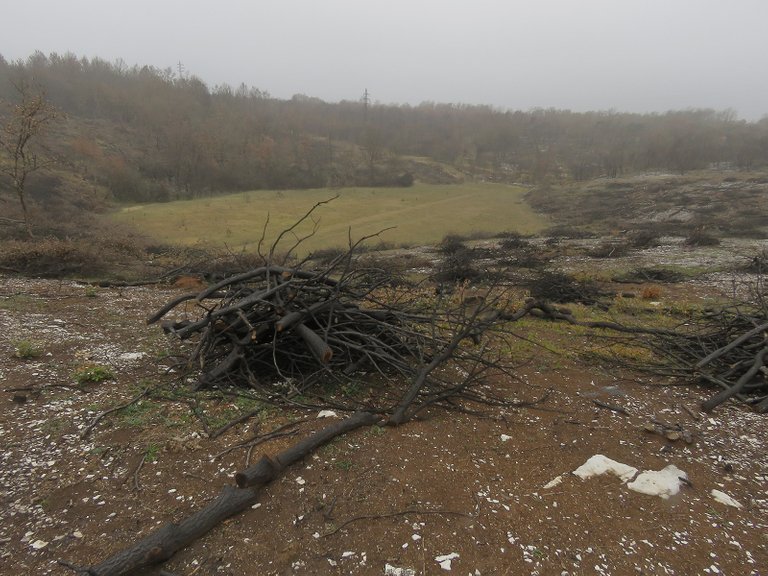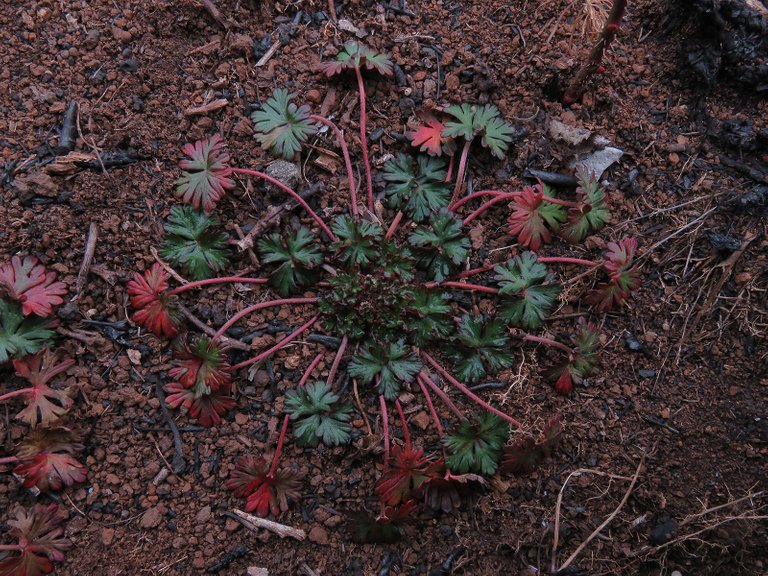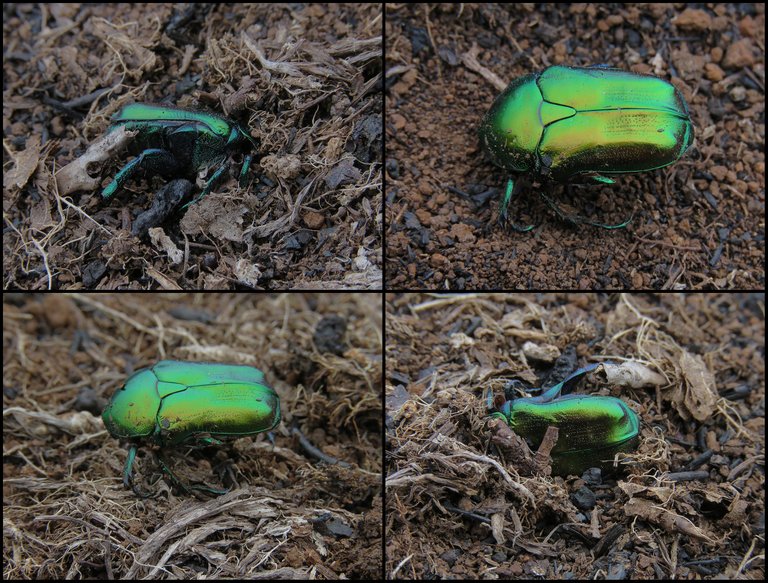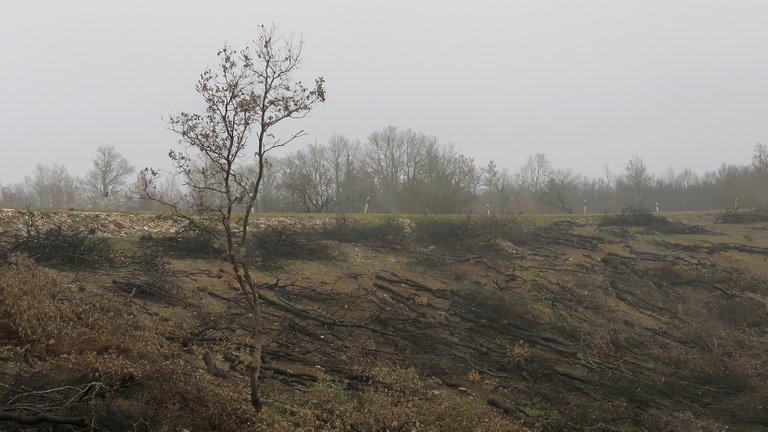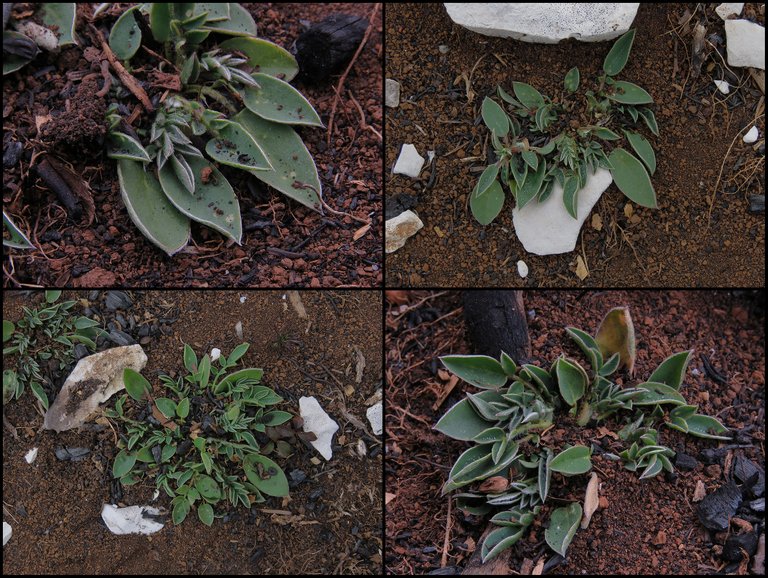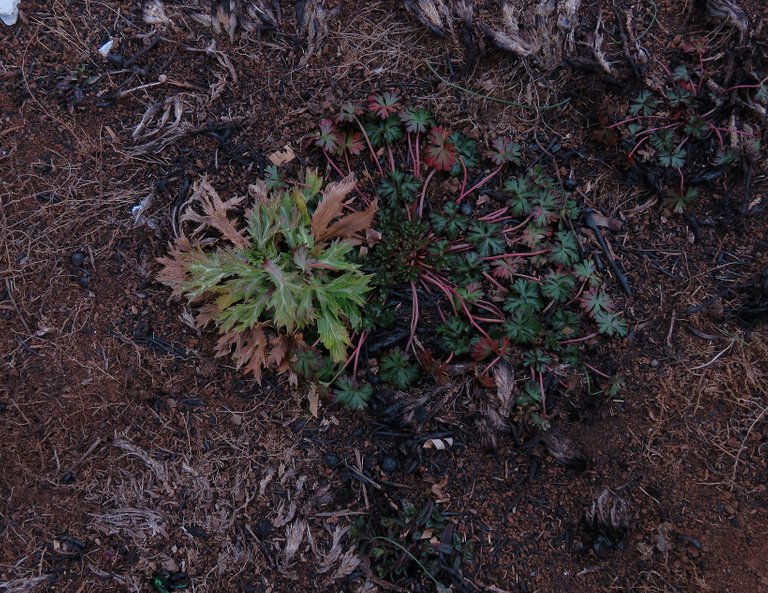A little more than a month ago, on the 17th of February, I revisited a roadside area about 30 - 35 kilometers north of my hometown, near the small village of Shtokovtzi, and only a couple of kilometers from the small town called Svetvinchenat. A wildfire caught that place on the 19th of August 2022.
In today's post, I'll show you some plants and the scenery, photographed half a year after the fire. As you can see in this opening photograph, the barren burned trees have been cut down, cut in pieces, and turned into piles that give an interesting look to the landscape.
Fresh new foliage is constantly coming out near the dark carbonized wood, even in winter. Here you can see the young shoots of Quercus robur, the pedunculate oak peeking from under the dead trunk of the same kind of tree.
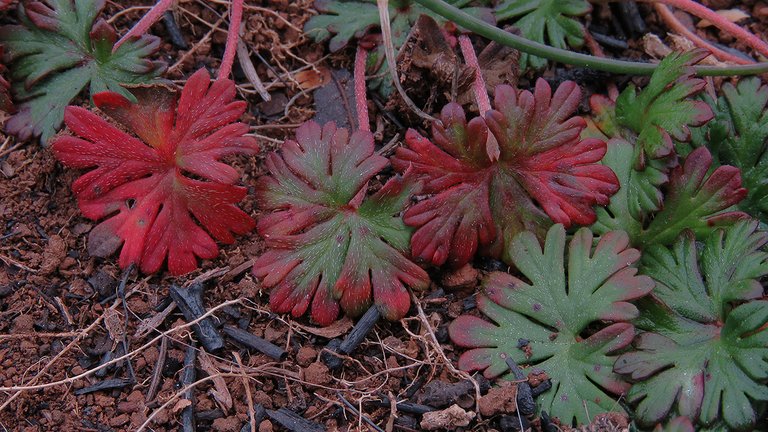
When the low-growing herbaceous plants complete the reclaiming of these burned places, they form a more or less continuous lawn, on which is practically impossible to get a good portrait of a single plant because various leaves are mixed in an intricate pattern. That hasn't happened yet here ...
... so I had a great opportunity to photograph some beautiful circular arrangements, clearly distinguishable on the barren ground.
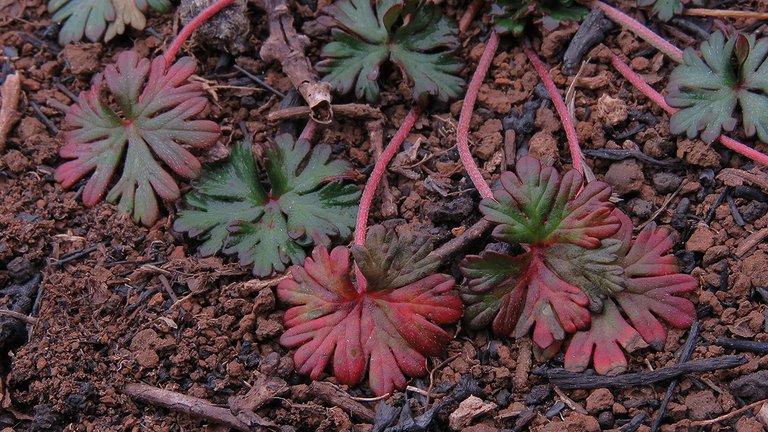
Here, and in the previous two photographs, you can see the leaves of the Geranium columbinum plant. Some leaves of some herbaceous plants turn completely or partially red in winter due to the frost and stressfully low morning temperatures, often followed by a sudden midday warmth.
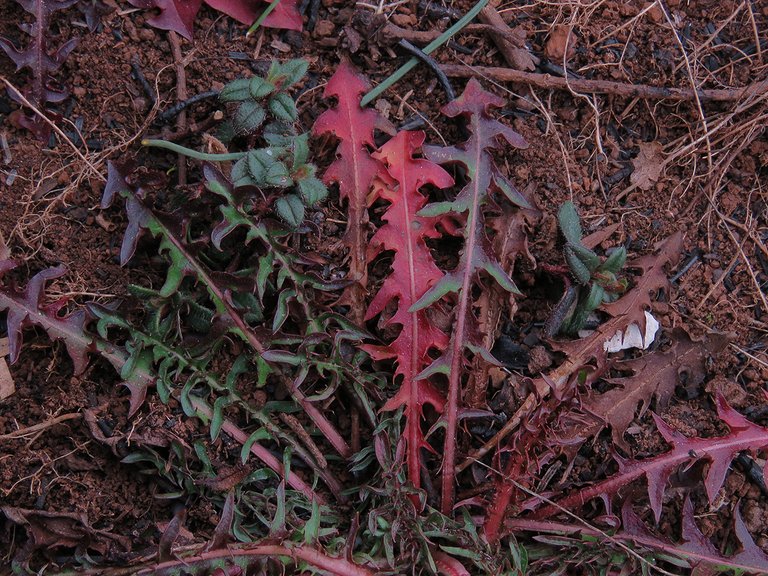
Here you can see the red, green, and violet leaves of the Taraxacum multidentatum dandelion. In the following photograph ...
... you can see a lovely yellow flower of the plant surrounded by those colorful leaves.
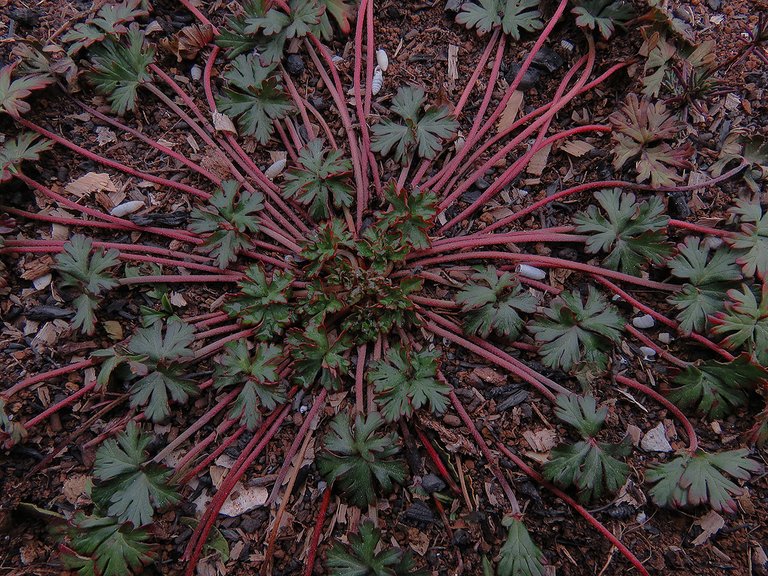
In this photograph, the Geranium columbinum leaves are green, but the pretty long stems are red, and that creates a beautiful radial pattern.
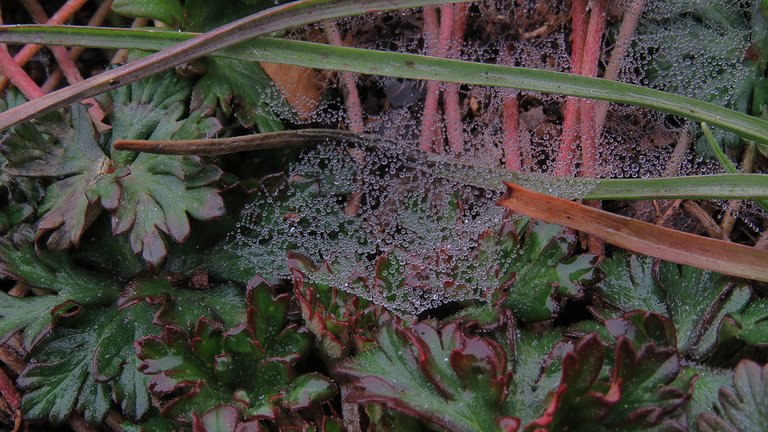
In the same area, just a meter or two further, always among the Geranium columbinum leaves, I found plenty of minuscule droplets on the horizontal web of a small spider from the Linyphiidae family. They would surely look like precious pearls through the macro lens, but I forgot that lens at home.
A bit later, I came across a considerably bigger piece of jewelry. This beautiful carcass was once a beetle. The Protaetia aeruginosa. A beetle from the Scarabaeidae family. The iridescent exoskeleton looked great in the subdued light of a cloudy day.
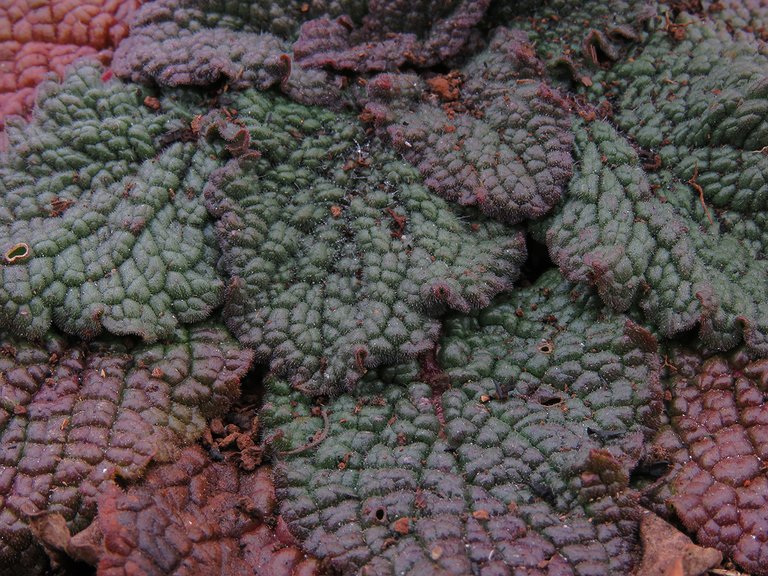
These wrinkled leaves ...
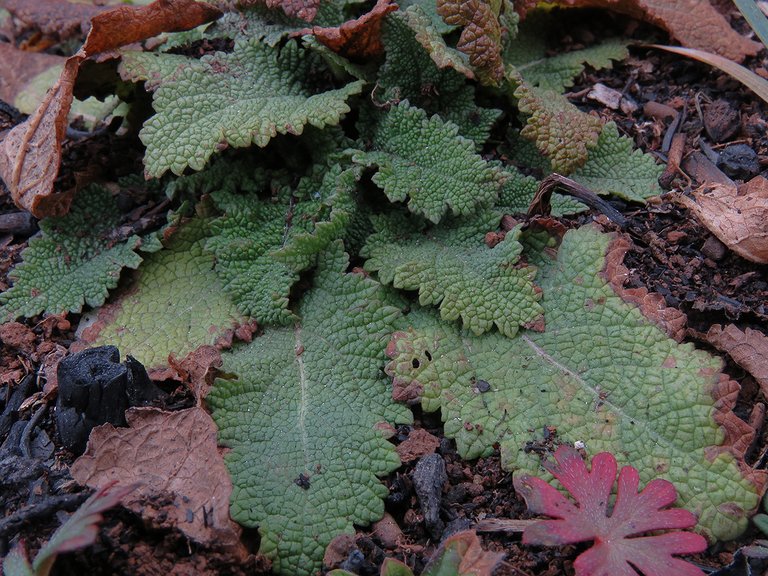
... belong to a sage. Salvia verbenaca is the name of this wild sage. Most leaves of these plants were ordinary green ...
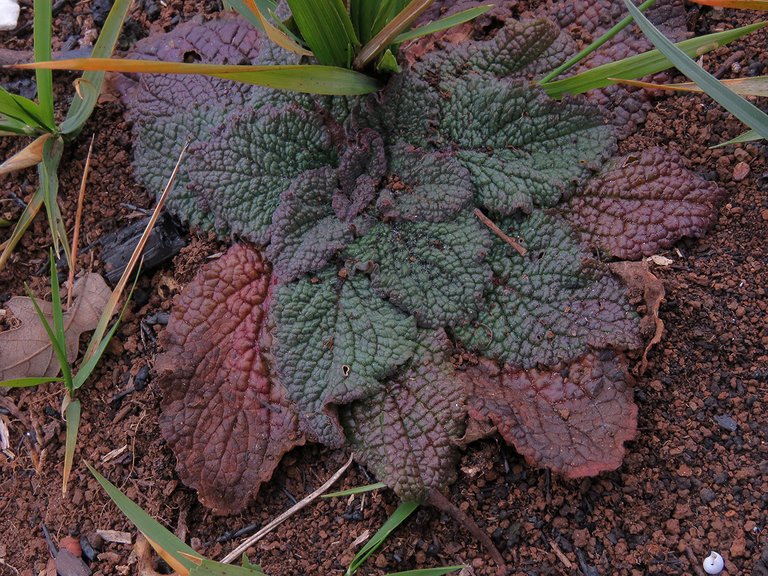
... but I did find a bunch of colorful, dark red, dark green, and violet Salvia verbenaca leaves on that gloomy winter day. In the following photograph ...
... you can take a break from these small details found down on the ground and take another look at the scenery along the stretch of the road between two small inland towns, Svetvinchenat and Vodnjan.
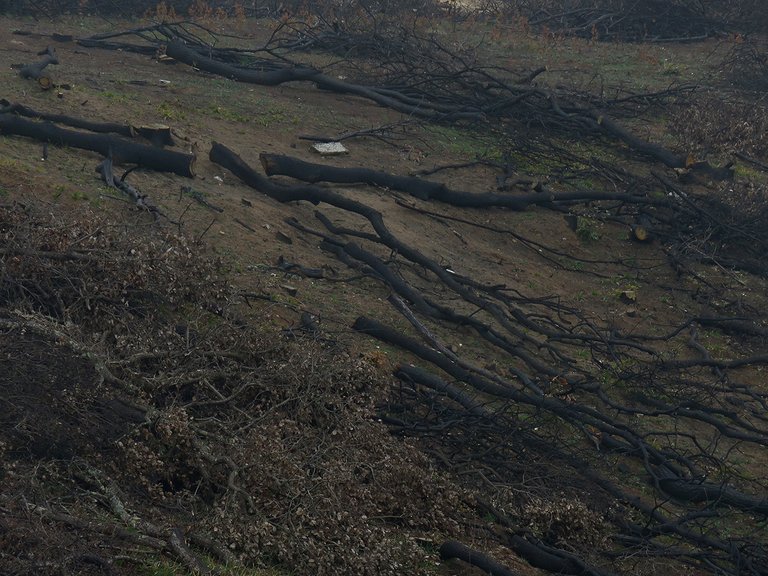
In some places, the cut-down trees were laying in pieces by the side of the road.

Here you can see a trio of small oak trees that have retained their original vertical position. On one of the stumps around them ...
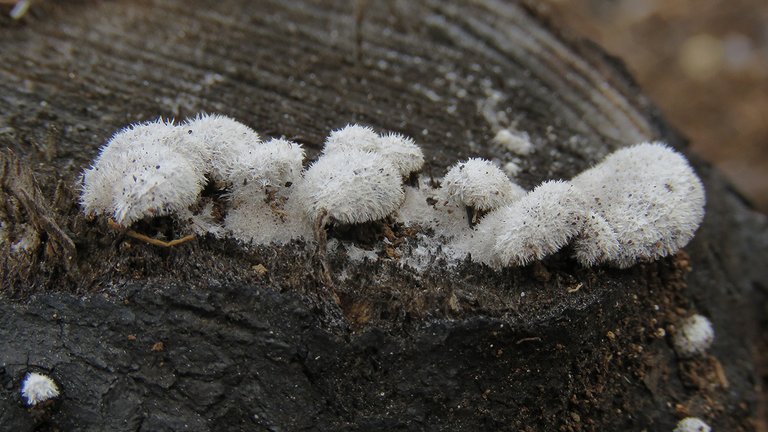
... I found a bunch of Schizophyllum commune mushrooms. These fruiting bodies are young and small.
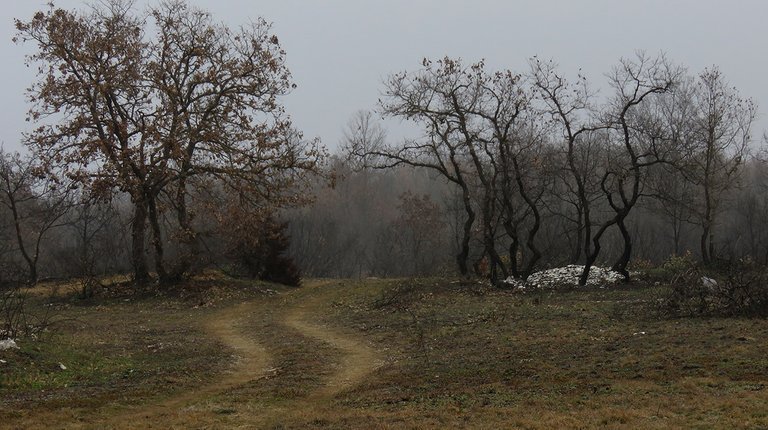
Here you can take another look at the scenery before I continue ...
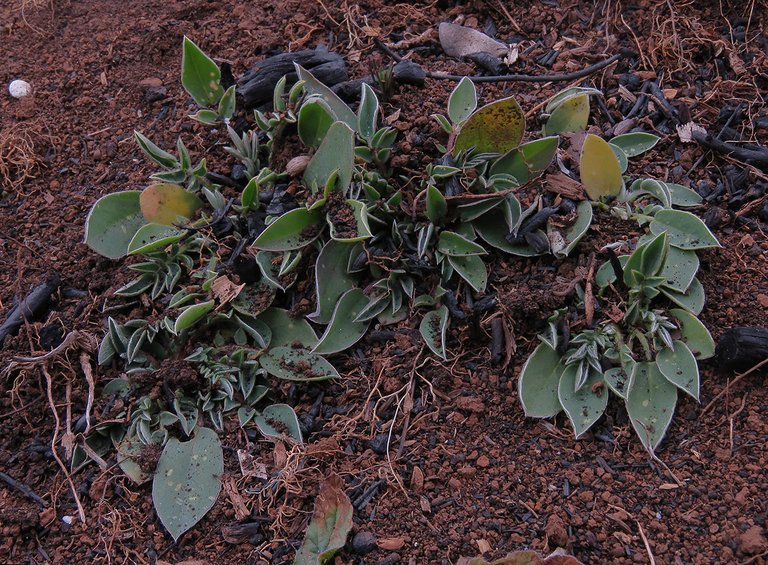
... to explore the herbaceous plants, with my eyes and the lens of my camera glued to the ground.
Here you can see the beautiful and pretty thick leaves of some plants that I wasn't able to identify.
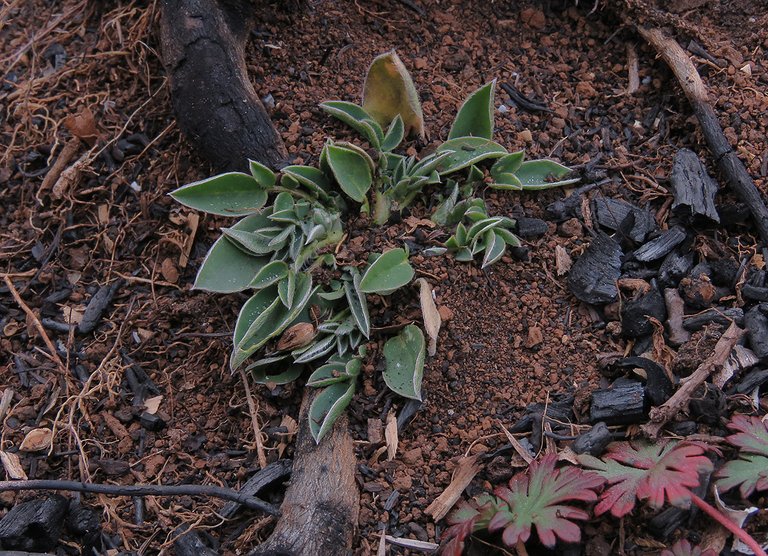
My Internet searches aren't always successful. Maybe one day, in one of the future posts, the same kind of plant will appear accompanied by its scientific name, but this time, the leaves shown in this and the previous five photographs, will remain a mystery.
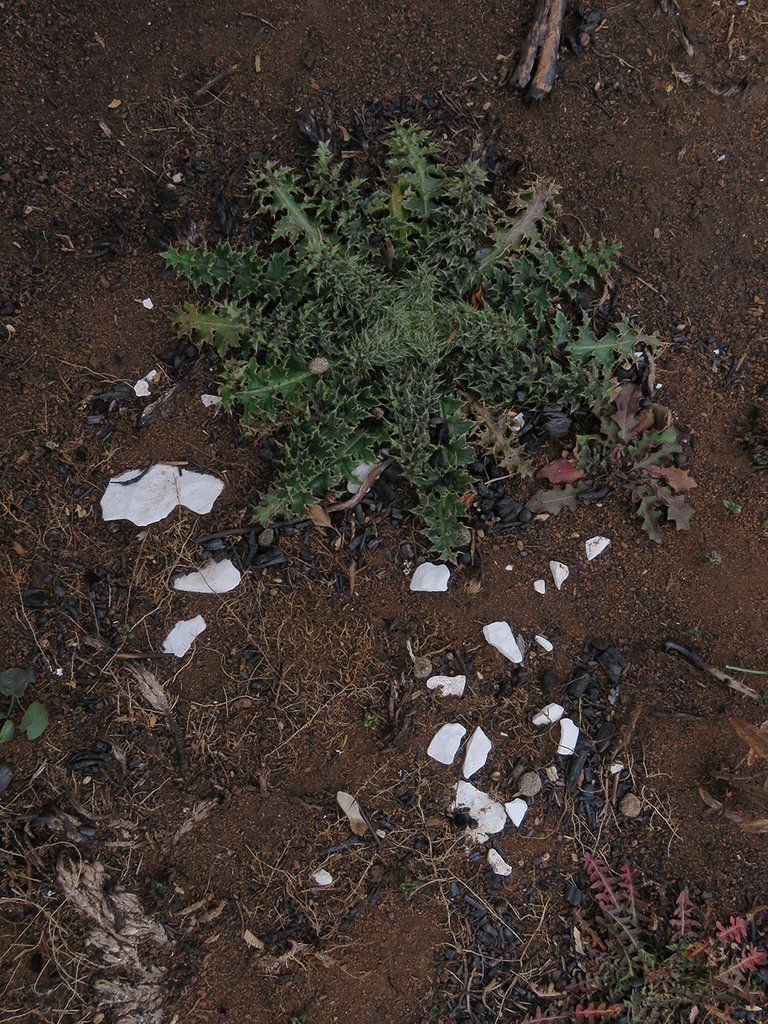
Here you can see the resilient thorny leaves of a thistle. Can't tell you what species is this only by looking at its leaves. A flower would be very helpful. Quite a few related species look practically the same at this early stage.
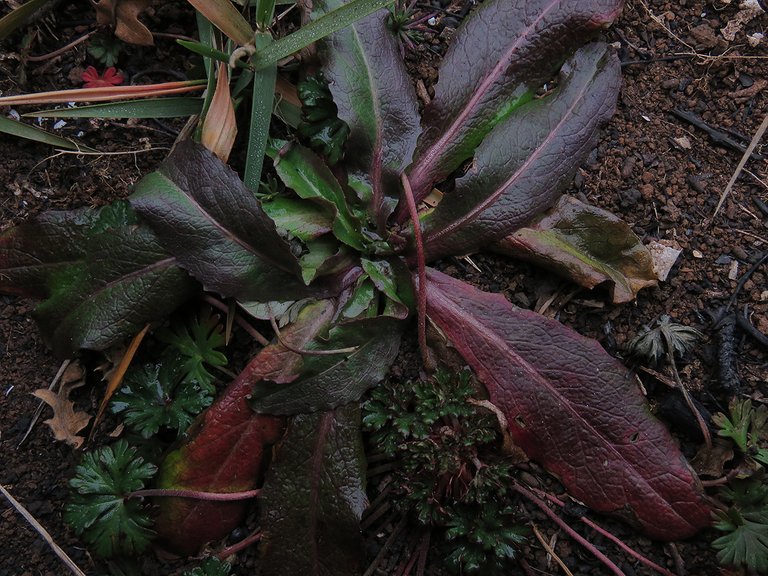
This salad-like mix of green and reddish leaves belongs to the Lactuca virosa plant.
Here you can see a mix made of Geranium columbinum and Eryngium campestre plants. Enlarging the picture by clicking on it is highly advised. That way you'll see all the details of this lovely herbal arrangement.
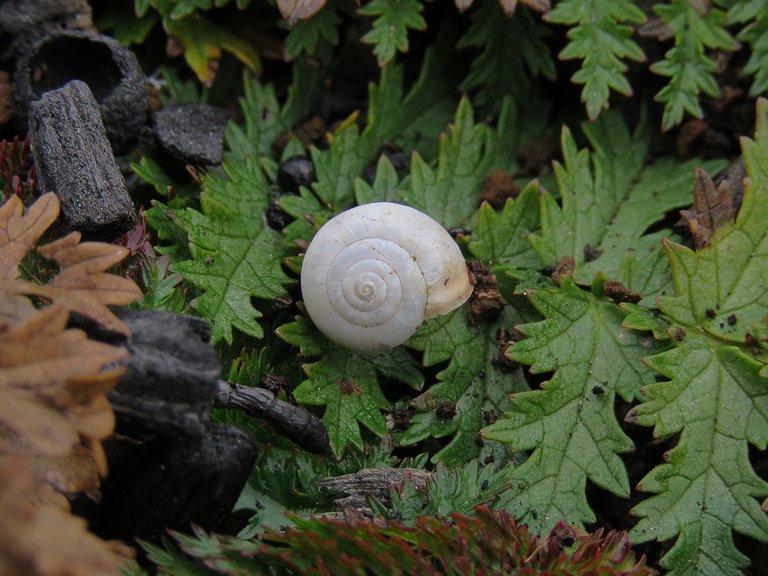
This empty little shell of the Theba pisana snail ...
... was found and photographed on the leaves of the Filipendula vulgaris plant.

Here you can see a nice mix of red and green leaves of the Erodium acaule plant.
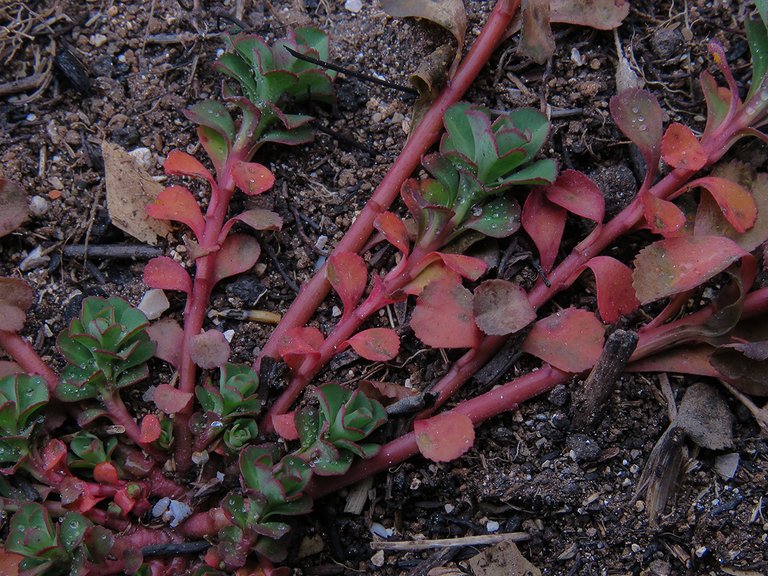
These lovely red leaves and stems mixed with a bit of green foliage ...
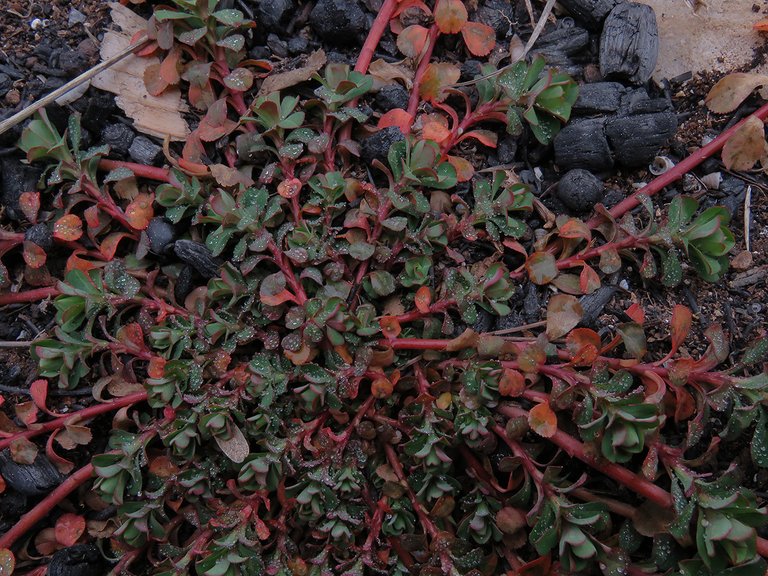
... belong to the Portulaca oleracea plant.
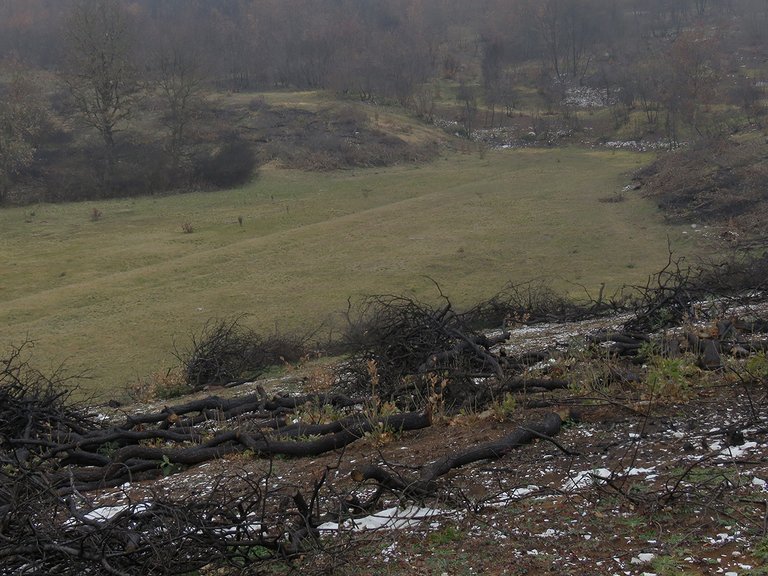
And that's it.
If you would like to see how this place looked on three different occasions, earlier after the fire, the following three links will take you back in time, to my old posts about the same area that was burned last summer.
https://ecency.com/hive-193212/@borjan/after-the-wildfire-two-months
https://ecency.com/hive-194913/@borjan/ten-days-later-after-the
https://ecency.com/hive-168869/@borjan/after-the-wildfire

And now, in the end, I'll give you a few links to the sites with more information about some of the protagonists of this post. I found some stuff about them there.
https://en.wikipedia.org/wiki/Quercus_robur
https://en.wikipedia.org/wiki/Geranium_columbinum
https://en.wikipedia.org/wiki/Salvia_verbenaca
https://en.wikipedia.org/wiki/Schizophyllum_commune
https://en.wikipedia.org/wiki/Lactuca_virosa
https://en.wikipedia.org/wiki/Filipendula_vulgaris
https://en.wikipedia.org/wiki/Erodium_acaule
https://en.wikipedia.org/wiki/Portulaca_oleracea
AND THAT'S IT. AS ALWAYS HERE ON HIVE, THE PHOTOGRAPHS ARE MY WORK.
